Video of the Week:
Moth Orchids: Easy to Grow
Ornamentals:
Controlling Volunteer Trees
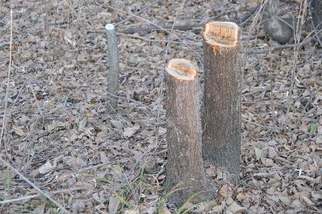
Most trees resprout after cutting though some don't. Cutting those that don't resprout is an effective control method. For example, eastern redcedar is a very common species that will not resprout after cutting. Those that do resprout include Siberian elm, hackberry, osage orange (hedgeball), oak, ash, aspen, cottonwood, maple, sycamore, willow and many more. These trees will either need to be dug out or the cut stump treated with herbicide after cutting.
Note that when we say volunteer trees, we mean those that come from seed rather than suckers that originate from the roots of an existing tree. The recommendations given in the remainder of this article are designed to kill these volunteer trees. Using herbicides on suckers will damage and very possibly kill the original tree. Trees that commonly produce suckers include tree of heaven, honeylocust, black locust, hackberry, western soapberry, cottonwood, aspen, poplar, willow and boxelder. It is also possible for larger trees of the same species to be root-grafted. Even though root-grafted trees are not suckers, they do share materials between the individual
root systems and therefore herbicides used to treat one tree can be passed to its neighbor.
Let's say we have a tree we want to control that is a volunteer and there are no other trees of the same species close enough to be root-grafted that we do not wish to harm. What do we do? If the tree is any size, you probably do not want to dig it out. That leaves using a herbicide on the cut stump. Basal treatments are also possible but that is beyond the scope of this article. First decide what herbicide to use.
Triclopyr and glyphosate are the herbicides most commonly available to homeowners. Triclopyr is found in many brush killers and glyphosate is found in Roundup as well as numerous other products. Read the label before purchasing to make sure that a cut stump treatment is listed. Most often the undiluted product is applied to the stump immediately after cutting. A paint brush is often used for the application though some people will dip their pruning shears in the products immediately before cutting. Regardless, it is important that the stump is treated immediately or at least within 5 minutes. Note that a paint brush with foam rather than bristles is less likely to drip.
Trees do not need to be actively growing to be controlled. Actually this time of year is a very good time to treat as long as applications are made when the temperature is above freezing. (Ward Upham)
Flowers:
Poinsettia Care
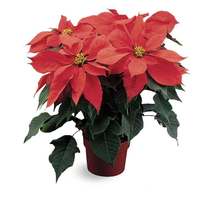
Poinsettias are somewhat finicky in regard to soil moisture. Avoid overwatering because poinsettias do not like "wet feet." On the other hand, if the plant is allowed to wilt, it will drop leaves. So how do you maintain proper moisture? Examine the potting soil daily by sticking your finger about one inch deep into the soil. If it is dry to this depth, the plant needs water. When it becomes dry to the touch, water the plant with lukewarm water until some water runs out of the drainage hole, then discard the drainage water. (Ward Upham)
Miscellaneous:
Ice Melters
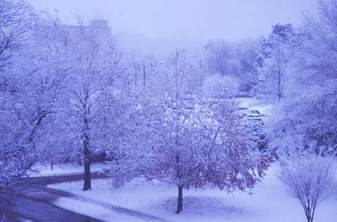
Calcium chloride is the traditional ice-melting product. Though it will melt ice to about -25 degrees F, it will form slippery, slimy surfaces on concrete and other hard surfaces. Plants are not likely to be harmed unless excessive amounts are used.
Rock salt is sodium chloride and is the least expensive material available. It is effective to approximately 12 degrees F, but can damage soils, plants and metals. Potassium chloride can also cause serious plant injury when washed or splashed on foliage. Both calcium chloride and potassium chloride can damage roots of plants.
Urea (carbonyl diamide) is a fertilizer that is sometimes used to melt ice. Though it is only about 10% as corrosive as sodium chloride, it can contaminate ground and surface water with nitrates. Urea is effective to about 21 degrees F.
Calcium magnesium acetate (CMA), a newer product, is made from dolomitic limestone and acetic acid (the principal compound of vinegar). CMA works differently than the other materials in that it does not form a brine-like salt but rather helps prevent snow particles from sticking to each other or the road surface. It has little effect on plant growth or concrete surfaces. Performance decreases below 20 degrees F.
Limited use of any of these products should cause little injury.
Problems accumulate when they are used excessively and there is not adequate rainfall to wash or leach the material from the area. Since limited use is recommended it is best to remove the ice and snow by hand when possible. When they are applied, practice moderation. Resist the temptation to over apply just to make sure the ice and snow melts. Keep in mind this can damage concrete surfaces as well as the plants and grass growing along the walks and driveways. These problems are normally latent and do not show up until spring or summer. (Ward Upham)
Compost Pile Maintenance
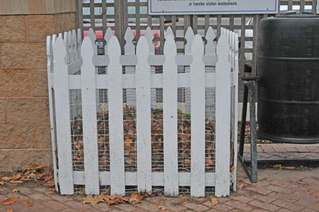
microorganisms that break it down. Water may need to be added if the material you move to the center is dry. A tree root feeder is an easy way to add water to a compost pile as the needle can be used to “inject” the pile. Check the moisture content by squeezing a fistful in your hand. It should feel moist but no excess water should drip out. Compress the material as best you can as excess air can slow the composting process. (Ward Upham)
Using Old Garden Seed
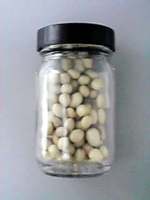
Seed will be viable longer if kept between 40 and 50 degrees F. Temperatures a bit lower than 40 degrees are fine as long as they are not sub-freezing. Therefore a refrigerator is a better choice than a freezer which can prove detrimental to seed longevity if there is too much moisture in the seed. Seed that has 8% or less moisture can be frozen without harm and will actually store much longer than seed stored above freezing. Seeds dried to 8% or less
moisture will break instead of bending when folded. Those that have a hard seed coat such as corn and beans will shatter rather than mashing when struck with a hammer.
If your seed is not dry enough for freezing, what should you do? The easiest answer is to store your seed under cool (not freezing) conditions. Drying seeds is a rather involved process and beyond the scope of this article. However, if you would like to try, an excellent reference on an effective procedure is given in the book “Seed to Seed” by Suzanne Ashworth.
Crop groups vary in seed longevity. Use the following as a guide for seed stored under cool, dry conditions.
Crucifers (cabbage, cauliflower, broccoli): 4 to 5 years
Corn: 2 to 3 years
Lettuce, endive: 4 to 5 years
Spinach, beets, carrots and chard: 2 to 3 years
Cucurbits: Squash, melons (including watermelon): 4 to 5 years
Tomatoes: 4 years
Peppers: 2 years
Onion, parsley, parsnip and salsify: 1 year
If you are unsure of viability and have plenty of seed, there is an easy method of determining how good your seed is. Place 10 seeds on a paper towel moistened with warm water and cover with a second moistened towel. Roll up the towels and place inside a plastic bag with enough holes for air exchange but not so many that the towels dry quickly. Place the bag in a warm place such as the top of a refrigerator. Remoisten towels with warm water as needed. After
the first week, check for germination. Remove sprouted seed and check again after another week. Add these numbers together to determine the percent germination. (Ward Upham)
Contributors: Ward Upham, Extension Associate
 RSS Feed
RSS Feed
